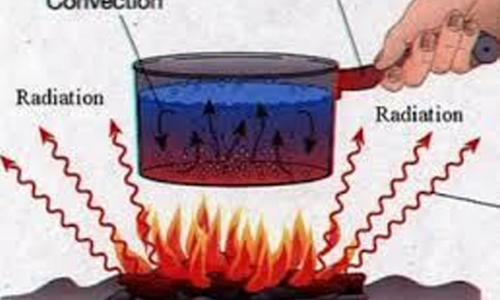Live
- YSRCP alleges meagre fund allocations for Super Six schemes
- Telangana CM Reviews Plans for First Anniversary of State Government
- Vijayawada: Kindness Day celebrated
- Rajamahendravaram: Students advised to set clear goals
- Digital locker facility now available at Namma Metro stations
- Swarna Vaijayanthi Mala presented to Tirumala god
- Physical fitness mandatory for cops: SP Jagadeesh
- Children’s Day celebrated at Ananthalakshmi School
- AHUDA chief Varun gets grand welcome
- Instil moral values in students
Just In

The term geothermal is used to refer the heat that comes from the Earths interior This heat often rises to the Earths surface through volcanoes Hot lava molten rock flows out of volcanoes and is a pretty awesome sight But besides volcanoes, lava, and ash, Earths internal heat makes its way to the surface in other unique ways
The term geothermal is used to refer the heat that comes from the Earth’s interior. This heat often rises to the Earth’s surface through volcanoes. Hot lava (molten rock) flows out of volcanoes and is a pretty awesome sight. But besides volcanoes, lava, and ash, Earth’s internal heat makes its way to the surface in other unique ways.
What You Need: 4 identical, clear, wide-mouthed jars (or just reuse 2 identical jars), Hot water, Cold water, Blue food coloring, Red food coloring, Two small pieces of thin tag board, index cards, or wax paper, A place that is okay to get wet.
What You Do: Take your materials to the place that is okay to get wet. Fill two of the jars to the rim with cold tap water. Place a couple of drops of blue food coloring in each jar (enough to make the water noticeably blue). Add a few more drops of cold water so that a bulge of water forms over the rim. Fill the other two jars to the rim with hot water from the tap. Place a couple of drops of red food coloring in each jar (enough to make the water noticeably red). Add a few more drops of hot water so that a bulge of water forms over the rim.
Take one of the red jars and place the tag board on top, letting the water seal the tag board to the jar. Using one hand to keep the tag board on the mouth of the jar, quickly turn the jar over. The water seal will keep the tag board stuck to the rim and will prevent water from leaking out.
Place the upside-down jar on top of a blue jar. Align the two mouths of the jars together and then, holding both jars steady, have someone else carefully remove the tag board, keeping the mouths of the jars together as much as possible. You should now have the red jar sitting upside down on top of the blue jar, both filled with their respective water. What do you notice about the water?
Now, take a new piece of tag board and place it on the second blue jar. Using the same method as before, place the second blue jar on top of the second red jar, making sure the mouths are aligned. Remove the tag board and watch the water in the two jars. What happens to the water?
What Happened: When the red jar was placed on top of the blue jar, the distinction between red water and blue water stayed fairly clear. But when the blue jar was placed on top of the red jar, there was a very rapid mixing of colours. Why is this?
Well, simply put, cold water is “heavier” than hot water. When the hot water is heated, the water molecules start moving around pretty fast and move apart from each other. The water molecules in the cold water, on the other hand, are packed closer together. So, in two equal size jars, more cold water molecules can fit in their jar than hot water molecules can fit in their jar. In scientific terms, the cold water is more dense than the hot water.
So when hot water is placed beneath cold water, it will rise up while the cold water sinks down. This causes the mixing of the water you saw earlier. However, when the hot water is placed on top of the cold water, nothing moves because the hot water is already where it wants to be – at the top.
The water in hot springs generally originates as cold rain water or snow melt. This cold water sinks into the ground until it reaches a layer of rock that is being heated by a chamber of magma. The hot rock heats the water, and the hot water rises back up to the surface of the Earth in the form of hot springs. This cycle of cold water sinking and hot water rising is known as convection. (The same is true of air – hot air rises while cold air sinks.)

© 2024 Hyderabad Media House Limited/The Hans India. All rights reserved. Powered by hocalwire.com







